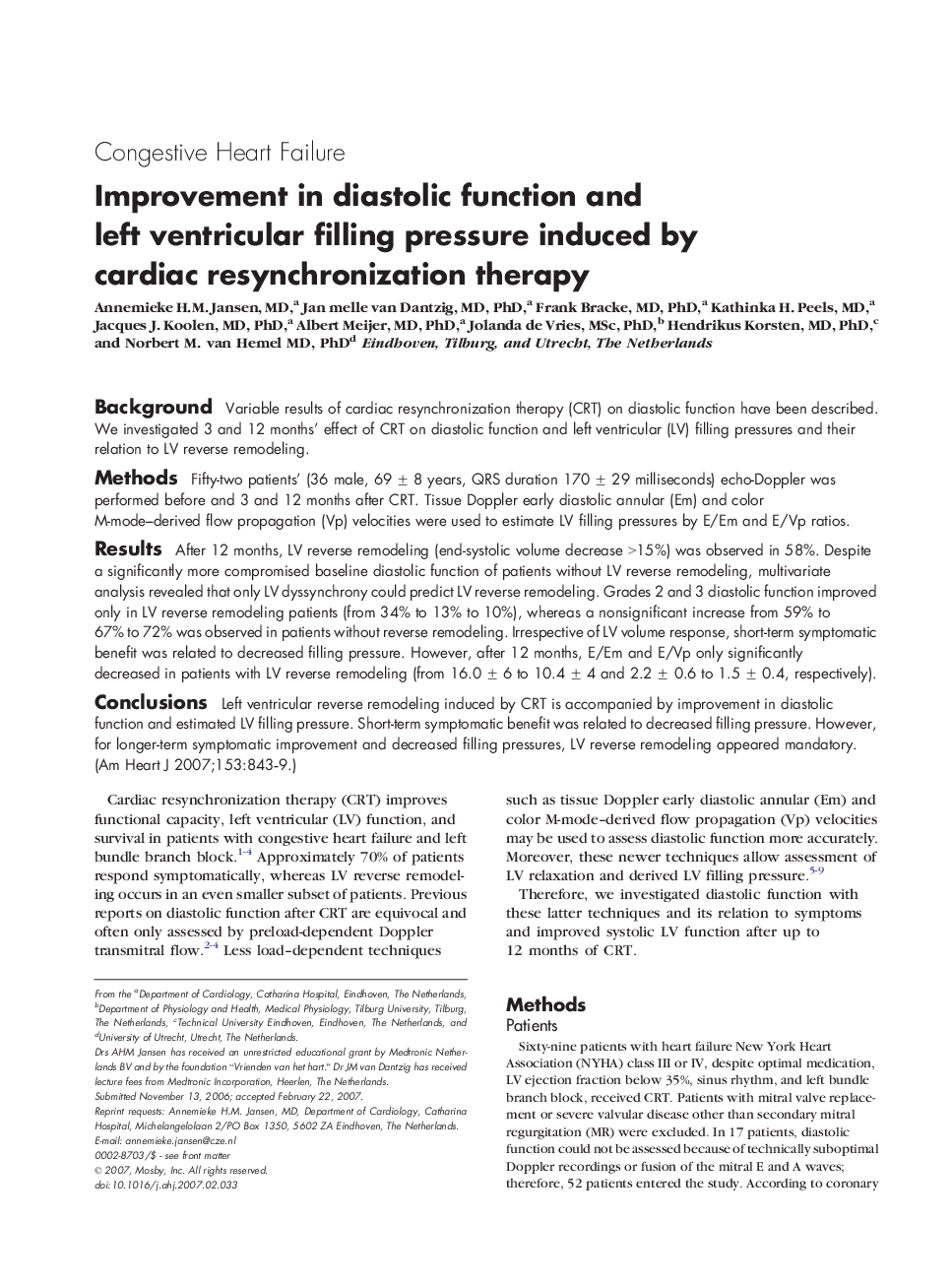| کد مقاله | کد نشریه | سال انتشار | مقاله انگلیسی | نسخه تمام متن |
|---|---|---|---|---|
| 2849197 | 1167674 | 2007 | 7 صفحه PDF | دانلود رایگان |

BackgroundVariable results of cardiac resynchronization therapy (CRT) on diastolic function have been described. We investigated 3 and 12 months' effect of CRT on diastolic function and left ventricular (LV) filling pressures and their relation to LV reverse remodeling.MethodsFifty-two patients' (36 male, 69 ± 8 years, QRS duration 170 ± 29 milliseconds) echo-Doppler was performed before and 3 and 12 months after CRT. Tissue Doppler early diastolic annular (Em) and color M-mode–derived flow propagation (Vp) velocities were used to estimate LV filling pressures by E/Em and E/Vp ratios.ResultsAfter 12 months, LV reverse remodeling (end-systolic volume decrease >15%) was observed in 58%. Despite a significantly more compromised baseline diastolic function of patients without LV reverse remodeling, multivariate analysis revealed that only LV dyssynchrony could predict LV reverse remodeling. Grades 2 and 3 diastolic function improved only in LV reverse remodeling patients (from 34% to 13% to 10%), whereas a nonsignificant increase from 59% to 67% to 72% was observed in patients without reverse remodeling. Irrespective of LV volume response, short-term symptomatic benefit was related to decreased filling pressure. However, after 12 months, E/Em and E/Vp only significantly decreased in patients with LV reverse remodeling (from 16.0 ± 6 to 10.4 ± 4 and 2.2 ± 0.6 to 1.5 ± 0.4, respectively).ConclusionsLeft ventricular reverse remodeling induced by CRT is accompanied by improvement in diastolic function and estimated LV filling pressure. Short-term symptomatic benefit was related to decreased filling pressure. However, for longer-term symptomatic improvement and decreased filling pressures, LV reverse remodeling appeared mandatory.
Journal: American Heart Journal - Volume 153, Issue 5, May 2007, Pages 843–849